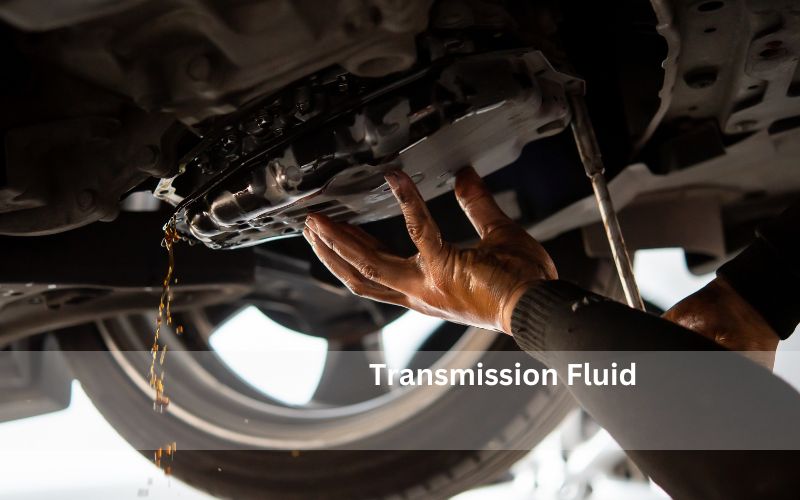How Much Transmission Fluid Does a Torque Converter Hold
Maintaining your torque converter is essential for optimal performance. But how much transmission fluid does a torque converter hold? In this blog article, we will discuss the importance of maintaining proper levels of transmission fluid in your torque converter and provide tips on refilling and checking the level. We’ll also look at what to consider when adding transmission fluid to a torque converter, as well as understand how much is required for optimal performance.
When it comes to the inner workings of a car, one of the most important components is the torque converter. This device helps to transfer power from an engine to a transmission and plays an integral role in how your vehicle runs. But have you ever wondered how much transmission fluid a torque converter can hold?
The answer depends on several factors including makes and model, as well as size and type of engine. Generally speaking, most modern cars will require between 4-6 quarts (3.8-5.7 liters) of transmission fluid for their torque converters – but this can vary depending on your specific vehicle’s needs.
How to Determine the Amount of Transmission Fluid Needed for a Torque Converter

When it comes to maintaining a vehicle, one of the most important aspects is ensuring that your transmission fluid levels are correct. This is especially true when dealing with torque converters, as they require specific amounts of transmission fluid in order to work properly. Determining the amount of transmission fluid needed for a torque converter can be tricky and should not be taken lightly.
The first step in determining how much transmission fluid you need for your torque converter is to check the owner’s manual or consult an expert mechanic who specializes in transmissions and converters. The manual will provide detailed information on what type and quantity of oil should be used for optimal performance. It’s also important to note that different types of vehicles may require different types or quantities of fluids depending on their make and model, so it’s best to double-check before making any purchases or changes.
Once you have determined which type and quantity are required by your vehicle’s manufacturer, it’s time to actually measure out how much oil you need for your particular setup. To do this accurately, use a measuring cup specifically designed for measuring liquids like engine oils; these cups usually come with markings indicating various amounts such as ounces (oz) or milliliters (ml).
What to Consider When Adding Transmission Fluid to a Torque Converter

When it comes to maintaining your vehicle, adding transmission fluid to a torque converter is an important step. Not only does this help ensure that your car runs smoothly and efficiently, but it can also prevent costly repairs down the road. However, there are some things you should consider before adding transmission fluid to a torque converter.
First of all, make sure you use the correct type of transmission fluid for your specific model and make of vehicle. Different vehicles require different types of fluids in order to function properly so be sure you’re using the right one for yours. Additionally, if you’ve recently had any work done on your car or have changed out any parts then double-check with a mechanic or dealership as they may recommend something different than what was originally used by the manufacturer when assembling your vehicle.
Secondly, pay attention to how much transmission fluid is being added into the torque converter as too much can cause damage while too little won’t provide enough lubrication which could lead to problems down the line such as slipping gears or even worse – complete failure! Make sure that whatever amount is specified in either manual instructions from the manufacturer or from advice given by an experienced mechanic is followed correctly and accurately each time new oil needs to be added to the system.
Finally, always keep track of when the last time was that oil has been changed out completely (usually every 30k miles) – this will help avoid buildup sludge inside engine components which could eventually lead them to wear prematurely.
The Benefits of Properly Maintaining Your Torque Converter’s Fluid Levels

Maintaining your torque converter’s fluid levels is essential for the proper functioning of your vehicle. Without it, you may experience a variety of issues such as reduced fuel efficiency, decreased performance, and even complete engine failure. Properly maintaining the fluid levels in your torque converter can help ensure that these problems are avoided and that you get the most out of your vehicle.
The first benefit to properly maintaining the fluid level in your torque converter is increased fuel efficiency. When there is too little or too much oil present in a transmission system, it can cause friction between components which leads to an increase in energy consumption by up to 20%. This means more money is spent on gas each month! Keeping an eye on this important component will help keep those costs down while also ensuring optimal performance from your car or truck.
Another advantage of keeping up with maintenance on this part is improved performance overall due to less wear and tear on other parts within the transmission system. The lubrication provided by having enough oil helps reduce heat buildup which keeps all components running smoothly without any unexpected breakdowns or malfunctions occurring along the way. Additionally, when everything works together efficiently like it should be able to do so without interruption then you’ll find yourself getting better mileage out of every tankful as well!
Finally, properly maintained fluids will extend both their own life span as well as that of other parts within a transmission system since they won’t have to work harder than necessary just because there isn’t enough lubrication available at any given time – something which could lead directly into costly repairs if left unchecked over long periods (or short ones!).
Understanding How Much Transmission Fluid is Required for Optimal Performance in a Torque Converter

Understanding how much transmission fluid is required for optimal performance in a torque converter is essential to ensure that your vehicle runs smoothly and efficiently. The amount of fluid needed depends on the size of the torque converter, as well as its type and design. Generally speaking, most vehicles require between two and four quarts of transmission fluid to operate properly.
The purpose of having the correct amount of transmission fluid in a torque converter is to lubricate all moving parts within it, including bearings, gears, seals, and other components. Without enough lubrication, these parts can become damaged or worn out prematurely due to friction caused by metal-on-metal contact during operation. Additionally, too little or too much transmission fluid can cause issues with shifting gears which may lead to poor fuel economy or even engine damage if left unchecked for an extended period of time.
In order to determine exactly how much transmission fluid, you need for optimal performance in your torque converter it’s important that you consult with either your owner’s manual or a professional mechanic who specializes in transmission repairs before making any changes yourself.
Tips on Refilling and Checking the Level of Transmission Fluid in your Torque Converter
Maintaining the level of transmission fluid in your torque converter is essential for ensuring that your vehicle runs smoothly and efficiently. It’s important to check the level regularly and top it up as needed, but there are a few tips you should keep in mind when refilling or checking the fluid.
First, make sure that you use only high-quality transmission fluid specifically designed for your vehicle’s torque converter. Using any other type of oil can cause damage to the system over time. Secondly, always check with an experienced mechanic before attempting to refill or change out any fluids yourself – they will be able to advise on what type of oil is best suited for your specific model and provide guidance on how much should be added at each interval.
When topping off the transmission fluid, make sure that you do not overfill it as this can lead to serious problems down the line such as leaks or even worse – engine failure! The best way to ensure accurate levels is by using a dipstick that measures both cold and hot levels accurately; if these measurements differ significantly then something may be wrong with either your car’s cooling system or its seals so have them checked out immediately by a professional mechanic if need be.


